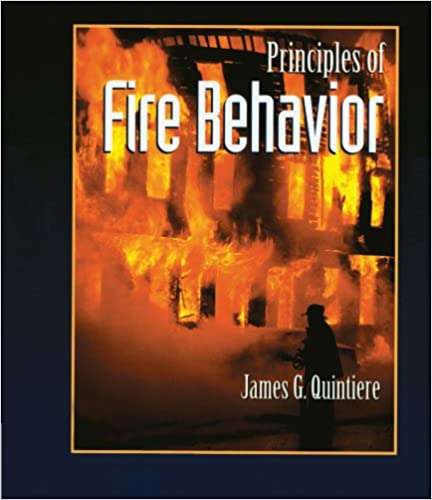Description
-
 MS SQL Server 2022 Standard | 1 Key for 1 PC$80.00
MS SQL Server 2022 Standard | 1 Key for 1 PC$80.00 -
 Youtube Premium | 4 months Premium Membership$10.00
Youtube Premium | 4 months Premium Membership$10.00 -
Product on sale
 Adobe Stock 40 credits$20.00
Adobe Stock 40 credits$20.00 -
Product on sale
 MS Office 2021 Home & Business 1 MAC Bind for iOS$85.00
MS Office 2021 Home & Business 1 MAC Bind for iOS$85.00 -
 MS Office 365 Family on Your Personal Email Id – 1 Year Plan$30.00 – $66.00
MS Office 365 Family on Your Personal Email Id – 1 Year Plan$30.00 – $66.00 -
Product on sale
 MS 2021 Project Professional Windows 1 PC Online key$35.00
MS 2021 Project Professional Windows 1 PC Online key$35.00 -
Product on sale
 Adobe Creative Cloud (All apps) – Personal$29.00 – $180.00
Adobe Creative Cloud (All apps) – Personal$29.00 – $180.00 -
 Windows Server 2019 Online Key$22.00
Windows Server 2019 Online Key$22.00 -
 MS Office Visio Professional Windows 1 PC Online Key$20.00 – $35.00
MS Office Visio Professional Windows 1 PC Online Key$20.00 – $35.00 -
Product on sale
 MS 2019 Project Professional Windows 1 PC Online key$22.00
MS 2019 Project Professional Windows 1 PC Online key$22.00 -
 McAfee LiveSafe Internet Security Antivirus 1 PC – 10 YEARS – Key$29.00
McAfee LiveSafe Internet Security Antivirus 1 PC – 10 YEARS – Key$29.00 -
 Office Professional 2016 – Lifetime License Key – 1PC$18.00
Office Professional 2016 – Lifetime License Key – 1PC$18.00 -
Product on sale
 Office Professional 2021 – Lifetime License Key – 1PC$35.00
Office Professional 2021 – Lifetime License Key – 1PC$35.00 -
Product on sale
![Principles of FIRE BEHAVIOR 16 Windows 11 Pro Key [ Retail License Key - Online Activation ]](https://civilmdc.com/wp-content/uploads/2021/10/1-300x300.jpg) Windows 11 Pro Key [ Retail License Key – Online Activation ]$22.00
Windows 11 Pro Key [ Retail License Key – Online Activation ]$22.00 -
Product on sale
 Customized Username Office 365 lifetime License for 5 Devices PC and Mac office 365 Pro Plus (100% online activation Account+Password)$19.99
Customized Username Office 365 lifetime License for 5 Devices PC and Mac office 365 Pro Plus (100% online activation Account+Password)$19.99
Fire behaviour refers to the manner in which fuel ignites, flame develops and fire spreads. In wildland fires, this behaviour is influenced by how fuels (such as needles, leaves and twigs), weather and topography interact. Once a fire starts, it will continue burning only if heat, oxygen and more fuel are present.
This text covers the four forms of fire: diffusion flames, smoldering, spontaneous combustion, and premixed flames. Using a quantitative approach, the text introduces the scientific principles of fire behavior, with coverage of heat transfer, ignition, flame spread, fire plumes, and heat flux as a damage variable. Cases, examples, problems, selected color illustrations and review of mathematics help students in fire safety and investigation understand fire from a scientific point of view.
-
 Adobe Acrobat XI Professional with License Key Activation$29.00
Adobe Acrobat XI Professional with License Key Activation$29.00 -
 Autocad 2007 – OFFLINE INSTALLER + Video Tutorial Install and activation – LIFETIME$7.00
Autocad 2007 – OFFLINE INSTALLER + Video Tutorial Install and activation – LIFETIME$7.00 -
 ChatGPT PLUS Subscription$7.00
ChatGPT PLUS Subscription$7.00 -
 ESET Internet Security Antivirus | 1 Year License$20.00
ESET Internet Security Antivirus | 1 Year License$20.00 -
 Course Hero Account 📗1 month$10.00
Course Hero Account 📗1 month$10.00 -
 General Software Collection | Request books, Codes, Research Articles | Request Software on Demand$3.00 – $25.00
General Software Collection | Request books, Codes, Research Articles | Request Software on Demand$3.00 – $25.00 -
 Vmware Workstation 16 Pro Lifetime License$150.00 – $199.00
Vmware Workstation 16 Pro Lifetime License$150.00 – $199.00 -
 Canva Pro Subscription – Own Your Email ID , 1 Year | 2 Years | 3 Years | 4 Years | LifeTime$5.00 – $25.00
Canva Pro Subscription – Own Your Email ID , 1 Year | 2 Years | 3 Years | 4 Years | LifeTime$5.00 – $25.00 -
 NORD VPN/IP Vanish Account Subscription 6 Month | 1 Year | 3 Years$12.00 – $60.00
NORD VPN/IP Vanish Account Subscription 6 Month | 1 Year | 3 Years$12.00 – $60.00 -
 Internet Download Manager IDM Version 6.41 fully lifetime activation with installation video | 5 times faster download (Pre-Activated)$6.00
Internet Download Manager IDM Version 6.41 fully lifetime activation with installation video | 5 times faster download (Pre-Activated)$6.00 -
 Lumion 12.5 | 12 |11.5 Pro Full (Lifetime) – Include Installation Tutorial$10.00 – $25.00
Lumion 12.5 | 12 |11.5 Pro Full (Lifetime) – Include Installation Tutorial$10.00 – $25.00 -
 Adobe Acrobat Pro DC 2023 | 2022 | 2021 | 2020 | Latest Full Version | Lifetime$10.00 – $15.00
Adobe Acrobat Pro DC 2023 | 2022 | 2021 | 2020 | Latest Full Version | Lifetime$10.00 – $15.00 -
![Principles of FIRE BEHAVIOR 30 Sketch Up Pro 2024 | 2023 | 2022 | 2021 Full Package Bundle + Vray 6 + Enscape 3.4 + Thea Render 3.5 [Lifetime & Full]](https://civilmdc.com/wp-content/uploads/2022/03/Sketch-Up-Pro-2023-300x300.jpg) Sketch Up Pro 2024 | 2023 | 2022 | 2021 Full Package Bundle + Vray 6 + Enscape 3.4 + Thea Render 3.5 [Lifetime & Full]$10.00 – $40.00
Sketch Up Pro 2024 | 2023 | 2022 | 2021 Full Package Bundle + Vray 6 + Enscape 3.4 + Thea Render 3.5 [Lifetime & Full]$10.00 – $40.00 -
 Adobe 2023 | 2022 Full Collection$25.00 – $30.00
Adobe 2023 | 2022 Full Collection$25.00 – $30.00 -
 Autodesk 2025 | 2024 | 2023 | 2022 Collection on Your Email id$13.00 – $85.00
Autodesk 2025 | 2024 | 2023 | 2022 Collection on Your Email id$13.00 – $85.00


